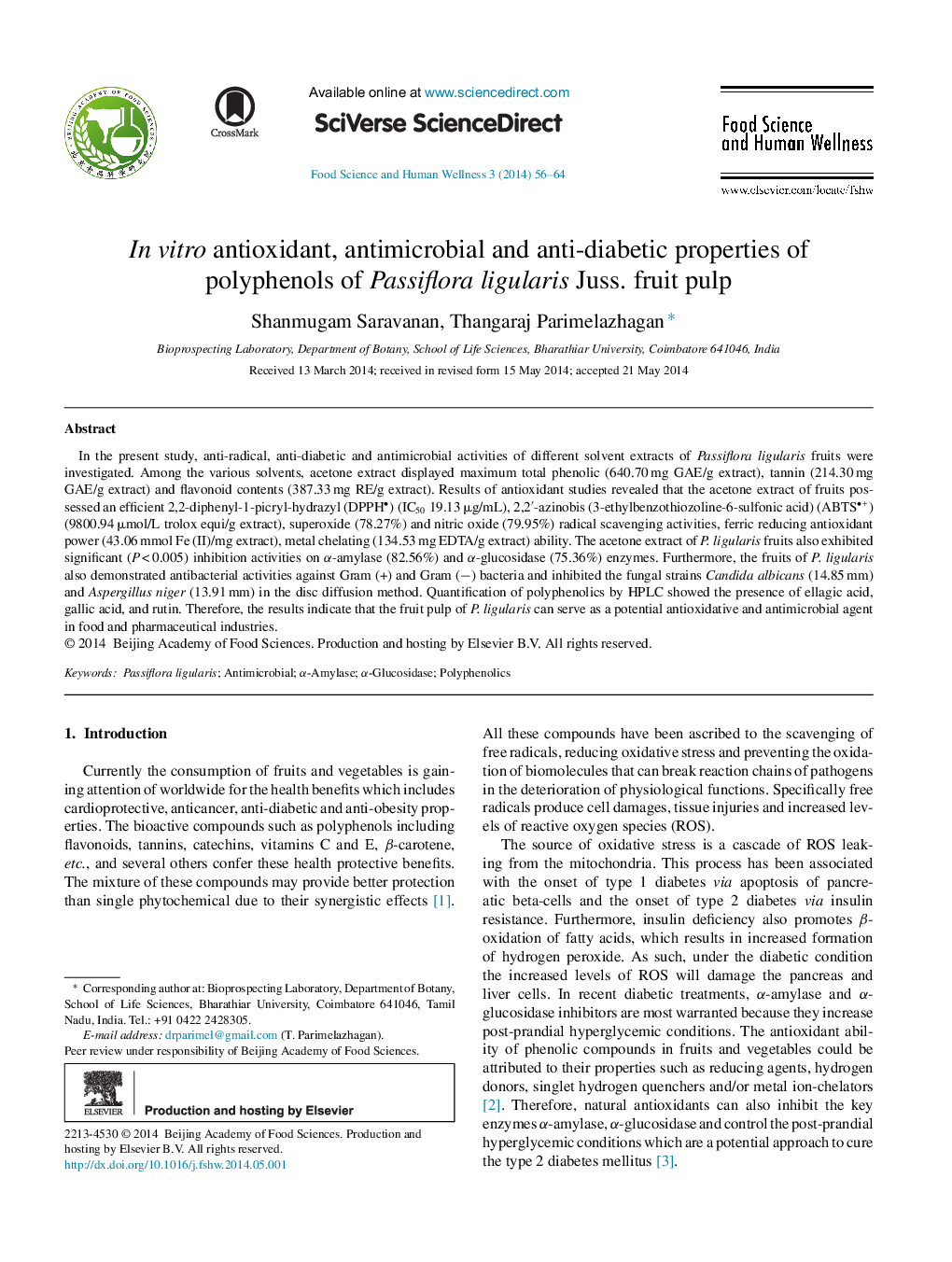| Article ID | Journal | Published Year | Pages | File Type |
|---|---|---|---|---|
| 2691429 | Food Science and Human Wellness | 2014 | 9 Pages |
In the present study, anti-radical, anti-diabetic and antimicrobial activities of different solvent extracts of Passiflora ligularis fruits were investigated. Among the various solvents, acetone extract displayed maximum total phenolic (640.70 mg GAE/g extract), tannin (214.30 mg GAE/g extract) and flavonoid contents (387.33 mg RE/g extract). Results of antioxidant studies revealed that the acetone extract of fruits possessed an efficient 2,2-diphenyl-1-picryl-hydrazyl (DPPH) (IC50 19.13 μg/mL), 2,2′-azinobis (3-ethylbenzothiozoline-6-sulfonic acid) (ABTS+) (9800.94 μmol/L trolox equi/g extract), superoxide (78.27%) and nitric oxide (79.95%) radical scavenging activities, ferric reducing antioxidant power (43.06 mmol Fe (II)/mg extract), metal chelating (134.53 mg EDTA/g extract) ability. The acetone extract of P. ligularis fruits also exhibited significant (P < 0.005) inhibition activities on α-amylase (82.56%) and α-glucosidase (75.36%) enzymes. Furthermore, the fruits of P. ligularis also demonstrated antibacterial activities against Gram (+) and Gram (−) bacteria and inhibited the fungal strains Candida albicans (14.85 mm) and Aspergillus niger (13.91 mm) in the disc diffusion method. Quantification of polyphenolics by HPLC showed the presence of ellagic acid, gallic acid, and rutin. Therefore, the results indicate that the fruit pulp of P. ligularis can serve as a potential antioxidative and antimicrobial agent in food and pharmaceutical industries.
